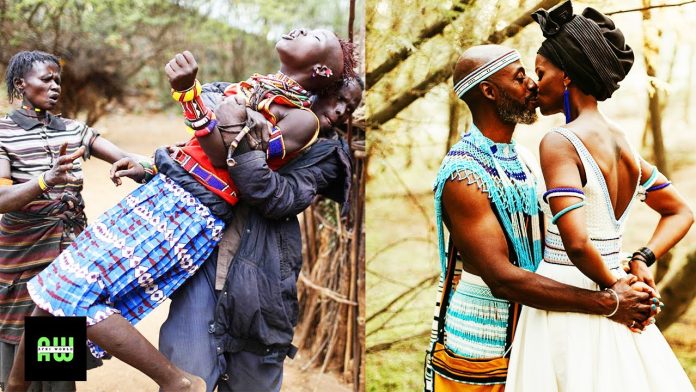Unique cultural traditions that hold significance within their community. One such practice is the virginity confirmation dance, a ritual observed during marriage ceremonies.
In the southern regions of Africa, the indigenous people of the Zulu tribe can be located.
Unique cultural traditions that hold significance within their community. One such practice is the virginity confirmation dance, a ritual observed during marriage ceremonies.
This dance not only serves as a way to celebrate the union between two families but also symbolizes the transition of the bride from her natal family to her husband’s family.
According to AFRI WOLRD, during this dance, both families engage in a spirited dancing competition to showcase their respective talents and celebrate the joyous occasion. The dance is a traditional means of expressing cultural pride and demonstrating unity.
An important aspect of this dance involves the bride performing a solo routine. She steps forward gracefully, executing a series of dance moves that reflect her journey from childhood to womanhood.
Part of her routine includes a distinctive step in which she raises one leg while the other remains grounded, in front of her mother-in-law.
The bride’s mother-in-law plays a significant role during the performance. She observes the bride’s dance closely, drawing upon her experience and wisdom. Through this observance, it is believed that she can discern the bride’s virginity status while her leg is raised.
However, the exact method by which she assesses this remains a closely guarded secret, known only to those within the tribe.
It’s important to note that this practice is deeply rooted in the Zulu tribe’s cultural heritage and is approached with a great deal of respect and reverence. As societies evolve, so too do their customs and beliefs.
While the virginity confirmation dance has historical significance, it’s essential to approach discussions about such practices with cultural sensitivity and an understanding of the complexities surrounding them.













